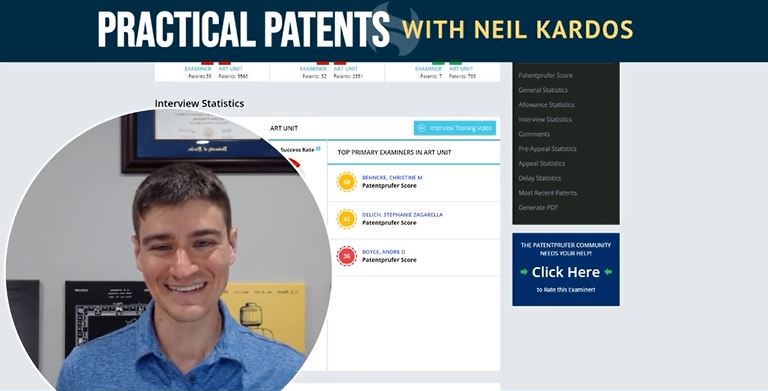Navigating Patent Prosecution: Understanding Your Examiner for Better Outcomes
In the world of patent prosecution, understanding the intricacies of the process can be the key to success. Neil Kardos shares some invaluable insights into how to achieve better outcomes during patent prosecution. With a background as a former patent examiner at the USPTO, Neil brings a unique perspective that can significantly impact your patent application journey.
Neil’s journey from a patent examiner to his current role at Harrity has given him a unique perspective on the patent world, and he’s here to shed light on a crucial aspect of the process – working effectively with examiners.
When Neil embarked on his career as a patent examiner, he encountered the familiar hesitation that often plagues newcomers in the field when it comes to allowing patent applications. This sentiment was widespread among his peers, and the challenges were amplified by his assignment to a business methods art unit. Neil’s early experiences reflect the reality of the patent landscape, as his examiner score in PatentPrufer started at a modest 56 out of 100.
Experience Breeds Confidence
Time and experience proved to be Neil’s greatest allies. With the accumulation of years spent in patent examination, he gradually became more comfortable with granting patents and, equally crucial, collaborating effectively with applicants to fine-tune claims for a higher likelihood of success. Neil’s journey underlines a universal truth in patent prosecution: grasping the unique dynamics of your assigned examiner is a cornerstone of success.
In the world of patent examination, each examiner brings their distinct perspective, expertise, and approach to the table. Acknowledging and embracing this individuality is pivotal in navigating the intricacies of patent prosecution. At Harrity & Harrity, we recognize this fundamental truth.
Harnessing the Power of Examiner Analytics
Within our firm, we harness the potential of examiner analytics to make well-informed decisions during the prosecution process. A critical judgment involves evaluating whether to request the presence of a primary examiner during inventor interviews. This decision hinges on the experience level of the examiner assigned to your application.
Moreover, you have the opportunity to request a specific primary examiner based on their performance score. This score offers a rough indication of their likelihood to allow your patent application. It’s a strategic move that can significantly impact your prosecution strategy.
In closing, Neil’s remarkable journey underscores a profound truth: the art of patent prosecution is as diverse as the examiners themselves. By delving into the intricacies of each examiner’s approach and leveraging the power of examiner analytics, you hold the key to unlocking a world of possibilities in the ever-evolving landscape of patents. As you embark on your own patent prosecution journey, remember that knowledge truly is power, and harnessing it can lead to transformative success.
Don’t forget to come back for more tips in the next installment of the Practical Patents Series. Until next time, happy patenting!
Note: This blog post is based on the opinions and observations of the author and should not be considered legal advice. Consult a qualified patent attorney for specific guidance on patent application drafting.
Want more tips? Check out other Practical Patents videos with Neil Kardos here!

